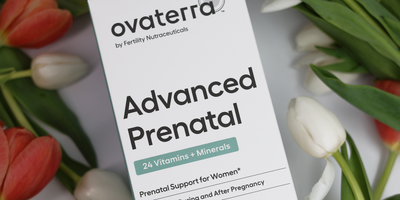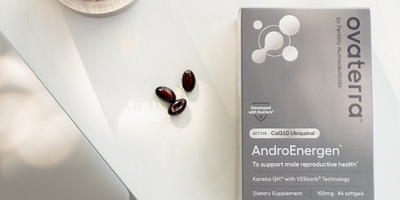When you go to a fertility specialist – or your general OBGYN – to understand your current fertility levels better, most likely, they will run some blood tests to measure your ovarian reserve. These blood tests include two reproductive hormones: AMH and FSH.
What is AMH?
AMH stands for anti-Mullerian hormone. AMH is produced by the granulosa cells – the cells that surround and nurture the immature eggs in ovarian follicles at the early stages of egg development, including the primary and preantral stages. Since multiple eggs are recruited into this months-long maturation process each cycle from a pool of tens of thousands of dormant ones, doctors believe the amount of AMH released by the eggs at the early stages of this process reflects the amount of dormant eggs that still remain in the ovary – the ovarian reserve.
Low AMH indicates low ovarian reserve
As women age, more eggs are used up and the number of dormant ones in the ovaries diminish. As a result, fewer immature eggs start the maturation process each month, leading to less AMH being produced by these early developing follicles. This is why AMH levels decline with age, tied to the natural decline in ovarian reserve and female fertility - and also why doctors have specific "normal" AMH levels by age.
On the opposite end, high AMH can be a sign of PCOS. In PCOS, eggs that enter the maturation process can’t progress toward ovulation. That means women with PCOS tend to have more immature eggs stuck at the stages where AMH is produced by the granulosa cells around them, leading to high AMH levels.
What is FSH?
FSH stands for follicle-stimulating hormone. Produced by the pituitary gland, FSH is a multi-functional reproductive hormone – it not only stimulates the growth of egg-containing follicles but also facilitates puberty and regulates menstrual cycles. (It even has roles in male reproductive health!)
In the context of ovarian reserve, FSH’s role in initiating the maturation process of eggs through granulosa cells is the most important. Once the growing follicles reach the preantral stage, FSH takes over the lead role from AMH in further encouraging eggs toward ovulation. Scientists think that the egg with the most FSH receptors may be the one that become dominant – that is, the egg survives all others that entered the same maturation cycle and eventually gets ovulated for a chance for fertilization.
High FSH indicates low ovarian reserve
High FSH levels indicate low ovarian reserve, which may sound counter-intuititve. If FSH encourages eggs’ growth, wouldn’t high FSH be a good thing? Not quite – high FSH is a sign that there aren’t enough eggs going through the maturation process. Growing eggs send hormonal signals (in the form of estrogen and progesterone), telling the pituitary gland to reduce the production of FSH to slow down the recruitment. When there aren’t enough growing eggs, the pituitary doesn’t receive this message, so it keeps producing FSH to encourage more eggs to start maturing, leading to higher FSH levels.
Which is better – AMH or FSH – for measuring ovarian reserve?
Doctors have debated whether AMH or FSH is better at measuring ovarian reserve, but more recently, AMH has been favored over FSH by many for a few reasons. The first is convenience: AMH doesn’t fluctuate with menstrual cycles, so AMH levels can be measured at any time during your cycle, whereas FSH needs to be measured on the second or third day of your cycle, which means you may have to go back for the FSH test if you happened to be at your doctor’s office on any other days of your cycle.
The second reason is that AMH is a more direct measurement of how many immature eggs are available in the ovaries. Direct comparison studies of AMH vs. FSH to measure ovarian reserve have also found that AMH is more sensitive than FSH, and can better predict pregnancy outcomes, especially when the AMH and FSH levels don't agree.
That said, reproduction is like a rocket ship – multiple systems have to function properly together at precise moments. That’s why fertility specialists still use both FSH and AMH to get a more comprehensive picture of what’s happening to ovarian reserve.
Interestingly, original clinical studies on DHEA and ovarian reserve suggested that DHEA may influence AMH levels but not FSH levels or AFC (antral follicle count, see below). Since then, a few small studies (like this prospective cohort study and this randomized controlled study) corroborated the early finding. This may be another hint that AMH and FSH, having distinct roles in the control of ovarian reserve, are controlled by different pathways.
What about AFC?
AFC, another acronym often seen in the context of ovarian reserve, is not a hormone test. Rather, it stands for antral follicle count. In simple terms, AFC is the number of antral follicles a doctor or an ultrasound technician can visualize on ultrasound. It’s a more subjective measure of the ovarian reserve, as each doctor or technician makes a judgement call on whether to count a follicle as an antral follicle. So, AFC can be useful when the same doctor continuously monitors you, but doctor-to-doctor and clinic-to-clinic variability can make AFC an unreliable tool.












